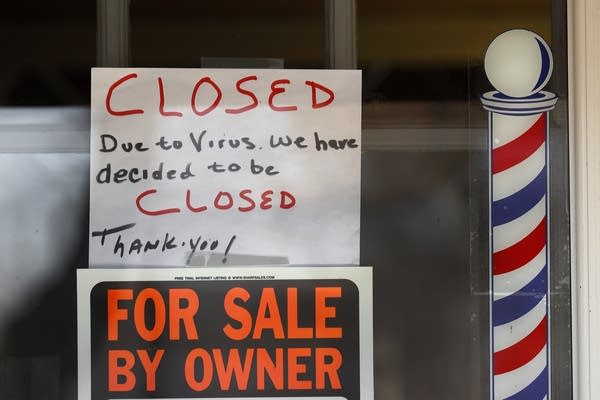Frustration and uncertainty as workers wait on unemployment pay

Go Deeper.
Create an account or log in to save stories.
Like this?
Thanks for liking this story! We have added it to a list of your favorite stories.
Nicole Fierce has built a successful career designing lighting setups at concerts and other big events over the last 21 years. “Make lights wiggle” is how she describes it.
Most of Fierce’s work qualifies as self-employment, but some work she does through her union is as a W-2 employee. That complicated the application for unemployment she made after work started to dry up in February.
The federal CARES Act, which passed in response to the pandemic, qualifies self-employed and contract workers like Fierce to unemployment benefits. But she’s received money only for her W-2 income, not for the majority of her self-employed income.
Fierce said she lives thriftily with no debt, some savings and a cheap mortgage. She looked for jobs at Target, QuikTrip and Amazon, but hasn’t had any luck.
Turn Up Your Support
MPR News helps you turn down the noise and build shared understanding. Turn up your support for this public resource and keep trusted journalism accessible to all.
”My living expenses are honestly ridiculously low compared to most people,” Fierce said. “But honestly, I can't pay for the car, the home, the bills, with the unemployment I'm getting.”
More than 600,000 Minnesotans have applied for unemployment benefits since the start of March. The state-run unemployment system has scrambled to meet the demand.
But tens of thousands of workers are finding themselves in the position of either being denied benefits or seemingly stuck in limbo as the state works to process people with more complicated employment histories.
Fierce said she understands that the state system is under pressure, and unemployment system workers she’s reached have been helpful, but it still feels to her like she and others are being left behind.
“I'm a tax paying citizen. I do everything I'm supposed to do,” Fierce said. “Yet when something like this happens, no one has my back. No one.”
About 30 million Americans have filed for unemployment benefits across the country since March. Demand for unemployment benefits put a huge strain on state systems, even knocking out some systems or leading to long delays in states like Wisconsin.
Minnesota hasn’t been immune from those problems, leading to frustration for laid off workers trying to navigate the system online and by phone.
Danielle Harju, a self-employed hair stylist who hasn’t worked since mid-March. She said trying to get information about her eligibility from the state has been a challenge while home with her four children.
“I'm on hold all day, on speaker phone with the hold music in the background, while I'm trying to do distance learning for four kids,” Harju said. “‘Anytime I can get through, they just tell me. ‘Well, you just have to wait.’”
“This is beyond anything we ever could have imagined,” said Department of Employment and Economic Development Commissioner Steve Grove. “It has taken just an all-hands-on-deck effort to make sure the system can handle the load.”
So far, Grove said the state has already started paying more than half a million Minnesotans unemployment benefits. That totals about $2 billion in payments.
Until the CARES Act passed, self-employed and contract workers weren’t eligible for unemployment benefits. Minnesota was one of the first states to integrate self-employed workers into the unemployment system, adding about 100 staff to help handle the load. They’ve processed applications and sent out payments to about 60,000 self-employed Minnesotans.
“Minnesota has been as quick as possible on this, but there are certainly workers whose cases are pretty complex,” Grove said. “The more complex the case, the longer it takes us to get through.”
About 50,000 people who applied for unemployment in the state have more complex cases or have been found ineligible for unemployment benefits.

While Grove understands that the process might be frustrating, he said anyone who thinks they might be eligible for unemployment should apply. Even if self-employed workers get an initial denial letter, staff may reach out to them with eligibility information as soon as they can. If workers are later found to be eligible, Grove said, they will receive all the back unemployment benefits they’re due.
That’s little reassurance for Harju, the out-of-work hair stylist. She was initially denied unemployment, and reached out to DEED to see if they needed more information verifying her income or a new application.
‘They said, ‘Oh, no, if you get flagged for denial, we're just automatically going to switch it over to self-employed,’” Harju said. “But for me, that hasn't happened yet — I don't know anyone who does hair who's gotten unemployment.”
As she waits, Harju is trying to stretch her husband’s income as a mail carrier by putting bills on hold, and getting groceries from the food shelf.
“There's a lot of people out of work right now and there's a lot of people just waiting and they don't know who to turn to,” Harju said. “What do you do? You just wait."



